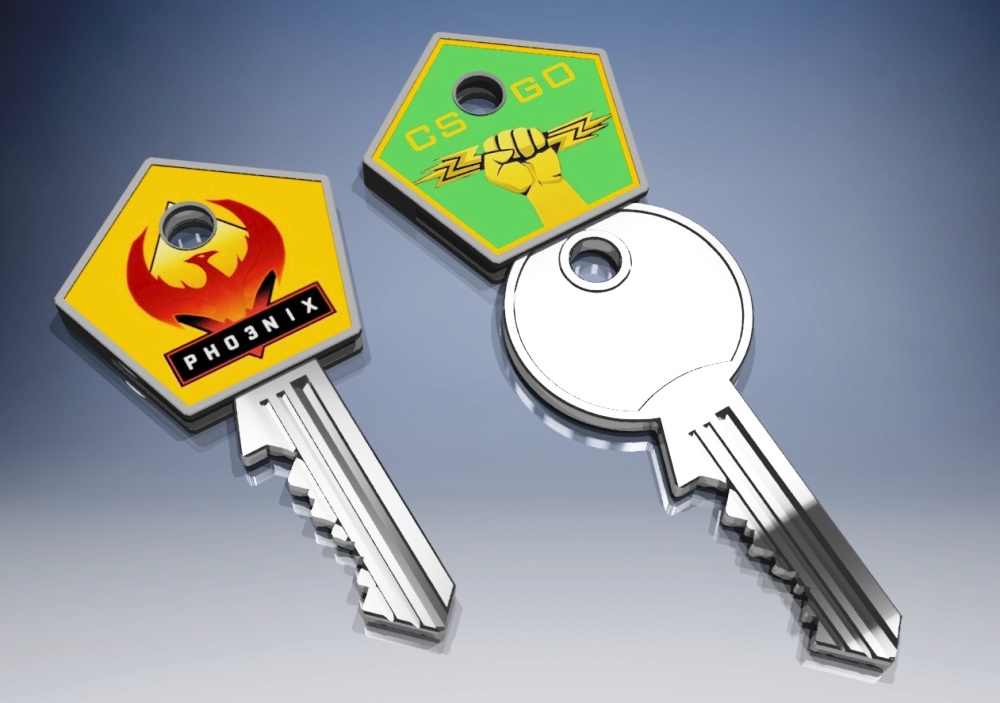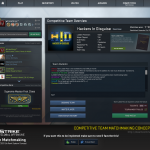
Key to open CS:GO (Counter-Strike: Global Offensive) cases is an in-game item that can be purchased from the Steam Community Market or directly from the CS:GO game itself. These keys are used to unlock the various cases or crates that players earn through gameplay or also buy from the market.
Each case typically requires a specific type of key to unlock. For example, a “Spectrum Case” would require a “Spectrum Case Key”. Inside the cases are a variety of potential rewards, typically in the form of weapon skins, which are cosmetic upgrades to the game’s various guns, but can also include knives.
Please note that Valve, the developer of CS:GO, has made changes to the key and case system in the past and may make more changes in the future. It’s important to check the latest updates directly from Valve or the CS:GO community for the most accurate information. Also, be aware of laws and regulations in your country as some have restrictions or requirements around such loot box mechanics.
Is the key some kind of password or link or something?
Key in CS:GO (Counter-Strike: Global Offensive) is not a password or link. Instead, it is a digital item within the game.
Here’s how it works:
- When you play CS:GO, you occasionally receive “cases” or “crates” as random drops. These cases contain a variety of cosmetic items, such as weapon skins or rare knives, which change the appearance of your weapons in-game.
- To open these cases, you need a corresponding key, which can be bought from the in-game store or the Steam Community Market. The key is a purchasable item, not a password or code.
- Once you have the appropriate key, you can use it to “unlock” a case. The case will open, and you’ll receive a random item from the case’s set of potential rewards.
- The item you receive is yours to keep. You can use it in-game, sell it on the Steam Community Market, or trade it with other players.
This system is very much like a lottery or a form of gambling, as the outcome is entirely based on chance and the value of the items can greatly vary. Some items are very common, and others are extremely rare.

How do you make money on this?
Making money from CS:GO skins or items involves several steps and a bit of luck, and it’s worth mentioning that it’s not a guaranteed or consistent way to earn income.
Here are the general steps:
- Acquire Skins: You can acquire skins by purchasing keys and opening cases, buying directly from the Steam Marketplace, trading with other players, or earning them through gameplay.
- Evaluate the Market: Study the marketplace to understand which items are in demand and why. Prices can fluctuate based on rarity, demand, and condition of the skin. In-game events or updates can also affect market prices.
- Sell at a Higher Price: Once you have an item that you believe is valuable, you can list it on the Steam Community Market for a higher price than you paid for it. If someone buys it, you’ll make a profit.
- Convert to Real Money: Any money you make from selling items on the Steam Community Market will be added to your Steam Wallet. This can be used to buy games, software, or other items on Steam, but it can’t be directly cashed out as real money. If you want to convert it into real money, you’ll need to use third-party websites or services that facilitate this. Note that these services may be subject to scams, so always be cautious and use trusted platforms.
It’s worth noting that there are risks involved in trying to make money from CS:GO skins or other in-game items. The market can be volatile, and item values can drop quickly. It’s also possible to spend a lot of money on keys and only receive low-value skins from cases. Plus, the use of third-party services to cash out your Steam Wallet can be risky, and not all of them are trustworthy or legal.
Furthermore, this kind of activity is akin to speculative trading or gambling, so it’s not recommended for everyone and should be approached with caution. If you’re underage, you may not even be allowed to trade or sell items in certain jurisdictions due to legal restrictions. Always check the laws and regulations in your area before attempting this.
Acquire Skins
Acquiring skins in CS:GO can be done in several ways:
- Opening Cases: When you play CS:GO, you’ll occasionally receive weapon cases as random drops. These cases can be opened with keys purchased from the in-game store or the Steam Community Market. Each case contains a variety of potential skins, and when you open it, you’ll receive one at random.
- Direct Purchase: You can purchase skins directly from the Steam Community Market, where other players list their items for sale. This can be a more reliable way to get specific skins you want, but the prices will often be higher than the cost of a key.
- Trade with Other Players: You can trade skins directly with other players. This can be done through the Steam trading interface. Always be cautious when trading to ensure that you’re not being scammed.
- In-game Drops: After finishing a game in CS:GO, there’s a chance you will receive a skin as a drop. However, these drops are often of lower quality and not as valuable.
Remember, the value of a skin in CS:GO is determined by its rarity, demand within the community, condition (e.g., Factory New, Minimal Wear, Field-Tested, etc.), and whether it’s a normal, StatTrak, or souvenir version. Always check these factors when acquiring a skin.
Evaluate the Market
Evaluating the CS:GO skins market involves understanding the current trends, demands, and pricing.
Here’s how to go about it:
- Understand Rarity and Quality: The rarity of a skin often affects its price. Rare skins are usually more expensive. In addition, the physical condition of a skin (Factory New, Minimal Wear, Field-Tested, Well-Worn, Battle-Scarred) can greatly impact its price. Skins also come in normal, StatTrak, or souvenir versions, which can also affect the price.
- Research the Market: Use the Steam Community Market to research prices and trends. Look at both the current listings and the sales history for a skin to see how its price has changed over time.
- Check Popular Skins: Certain skins are more popular and thus more valuable. These are often for popular weapons and have visually appealing designs. Keep track of these popular skins and their prices.
- Consider Game Updates: Game updates can have a huge impact on the skin market. For example, if a new case is released, the skins contained within it may be very valuable at first but decrease in value over time as more people open the case and sell the skins.
- Community Demand: Demand for certain skins can fluctuate based on the game’s meta, professional tournaments, and popular streamers or influencers showcasing specific skins.
Remember, the CS:GO market can be volatile and unpredictable. Prices can go up and down quickly. Always be cautious when investing in skins, and never spend more money than you can afford to lose.
Sell at a Higher Price
Selling skins at a higher price in CS:GO is all about timing and understanding the market.
Here are some steps on how to go about it:
- List Your Item: Once you have a skin that you think is valuable and want to sell, you can list it on the Steam Community Market. You get to set the price, but remember, your skin will be listed alongside many others, so it’s crucial to set a competitive price.
- Pricing: If you’ve studied the market, you should have a good idea of how much your skin is worth. Remember to consider the cut that Steam takes from each transaction when setting your price.
- Wait for the Right Time: Prices can fluctuate due to various factors, such as new updates, professional tournaments, or changes in demand. If your item isn’t selling, you may want to wait for a better time or adjust your price.
- Consider the Market Trends: For instance, new skins usually depreciate in price after their initial release. So, it might be a good strategy to hold onto a new skin for a while before listing it on the market.
Remember, making a profit by selling skins at a higher price requires patience and a good understanding of the market. It’s also worth noting that this isn’t a guaranteed way to make money, as the market can be unpredictable and volatile. Always be cautious and only invest what you can afford to lose.
Convert to Real Money
The money you earn from selling items on the Steam Community Market goes into your Steam Wallet, which can be used to buy games, software, or other items on Steam. However, Steam does not offer a way to directly convert this into real money or transfer it to a bank account.
To convert your Steam Wallet funds to real money, you would need to use third-party services.
However, this involves several risks:
- Scams: Some third-party services are not trustworthy and are designed to scam users out of their money or items. Always do thorough research before using a third-party service to ensure it is legitimate and reliable.
- Violations of Steam’s Terms of Service: Using third-party services to sell items or convert Steam Wallet funds to real money can violate Steam’s Terms of Service. This could result in your account being banned.
- Legal Issues: Some jurisdictions have laws and regulations regarding the sale of virtual goods or digital currency. Make sure to check the laws in your area before attempting to convert Steam Wallet funds into real money.
If you do decide to use a third-party service to sell your skins or convert your Steam Wallet funds, it’s crucial to do your research and understand the risks involved. Always choose trusted platforms and make sure you’re aware of all fees and terms of service before you proceed.
Lastly, consider seeking advice from a financial advisor or legal professional to ensure you’re making informed decisions.


